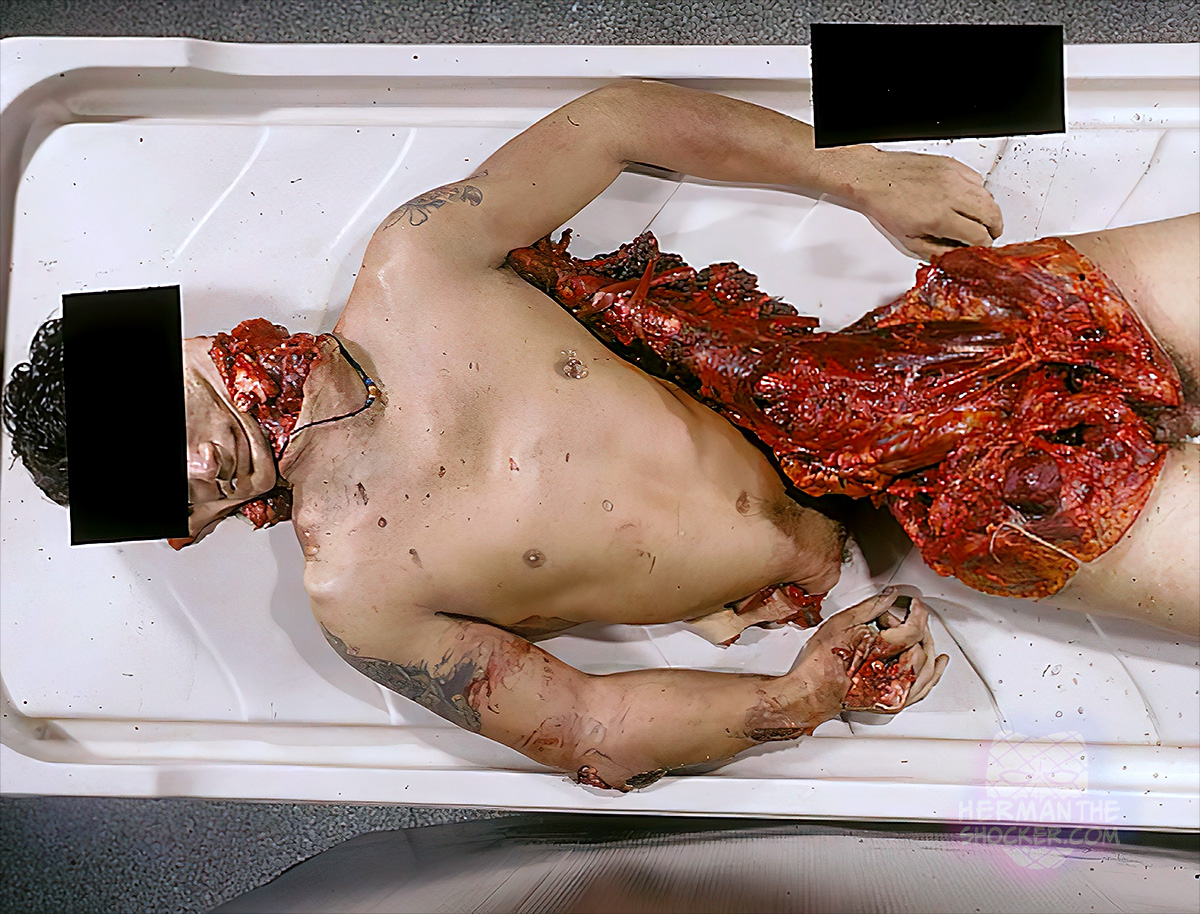This individual died from a complete body transection across abdomen, and decapitation in a motorcycle accident. Blunt-force abdominal trauma is relatively common. It can range in severity from minor cutaneous injuries to deep internal injuries, and even complete body transection. Frequently, blunt-force trauma is related to sudden deceleration mechanisms in addition to impact forces. Factors influencing the severity of abdominal blunt trauma, as well as many other types of trauma, include the size of the striking object, the site and force of impact, the strength of the abdominal wall, the underlying condition of the viscera, the extent of hemorrhage, and the level of consciousness of the victim prior to impact.
Severe trauma is more likely if the blow is forceful and sudden. A relaxed abdominal wall tends to provide little protection against external forces; if the victim recognizes that an abdominal blow is imminent, contraction of the abdominal muscles can lessen the transfer of force to internal organs, thus lessening the severity of the injuries.
Common blunt-force abdominal injuries include liver and spleen lacerations, bowel contusions and lacerations, mesenteric lacerations, and various skeletal and vascular injuries. Abdominal organs may be crushed against the vertebral column or torn by shearing forces. Hollow organs may burst due to rapidly increased intraluminal pressure. Even seemingly ‘‘minor’’ abdominal trauma, such as a small-bowel contusion, should really be considered a potentially lethal injury, since such injuries may progress to bowel wall necrosis, with secondary hemorrhage and/or peritonitis, sepsis, and death.
Latest posts









